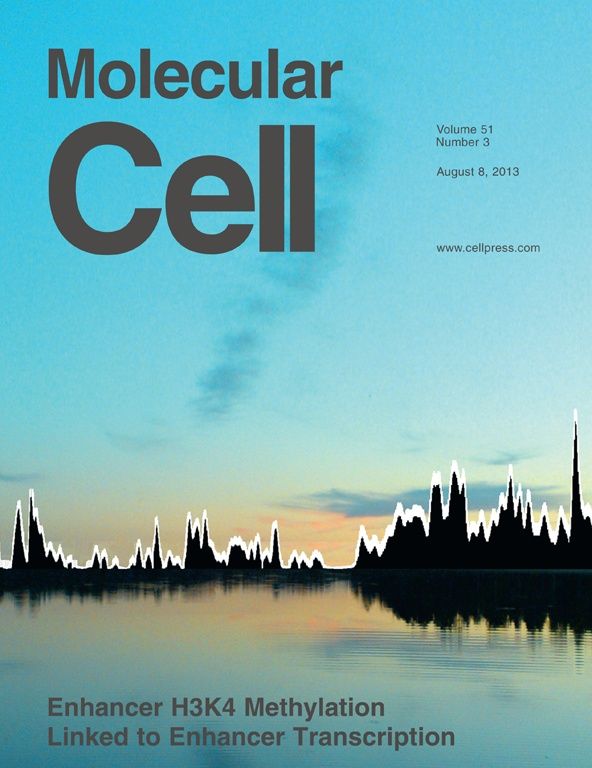博文
最新MC封面——表观遗传,美若山水
||

8 August, 2013 Volume 51, Issue 3
On the cover: Cell-specific transcriptional responses to extra- and intracellular signals require the combined activities of promoters and enhancers. Although recent studies suggest a hierarchical model in which lineage-determining factors prime cell-specific enhancers to provide access to signal-dependent transcription factors, the sequence of events that culminate in enhancer activation remain poorly understood. In this issue, Kaikkonen et al. (pp. 310–325) utilize ChIP-seq and genome run-on sequencing (GRO-seq) to investigate the sequence of transcription factor binding, histone modification, and enhancer transcription at 3,000 enhancers that are selected de novo in response to TLR4 signaling in macrophages. They provide evidence that the process of enhancer transcription itself is required for deposition of histone H3 lysine 4 mono- and dimethyl modifications that are signature features of enhancers. This concept is alluded to in the cover illustration, in which the inducible GRO-seq signals for the Irg1 primary transcript and upstream enhancer-directed RNAs are the “peaks” on the horizon that drive the remodeling of the epigenetic landscape of the macrophage. Cover art by Minna U. Kaikkonen.
Recent studies suggest a hierarchical model in which lineage-determining factors act in a collaborative manner to select and prime cell-specific enhancers, thereby enabling signal-dependent transcription factors to bind and function in a cell-type-specific manner. Consistent with this model, TLR4 signaling primarily regulates macrophage gene expression through a pre-existing enhancer landscape. However, TLR4 signaling also induces priming of 3,000 enhancer-like regions de novo, enabling visualization of intermediates in enhancer selection and activation. Unexpectedly, we find that enhancer transcription precedes local mono- and dimethylation of histone H3 lysine 4 (H3K4me1/2). H3K4 methylation at de novo enhancers is primarily dependent on the histone methyltransferases Mll1, Mll2/4, and Mll3 and is significantly reduced by inhibition of RNA polymerase II elongation. Collectively, these findings suggest an essential role of enhancer transcription in H3K4me1/2 deposition at de novo enhancers that is independent of potential functions of the resulting eRNA transcripts.

https://blog.sciencenet.cn/blog-982855-715512.html
上一篇:希望在前方
下一篇:Nature强势出品——体外诱导生殖细胞命运
全部作者的其他最新博文
- • 一个悲伤的故事
- • 我怀念的
- • 巴德年院士科大报告语摘——受益匪浅
- • 这是个黑童话么?——MC封面文章
- • 你是猴子请来的啥?